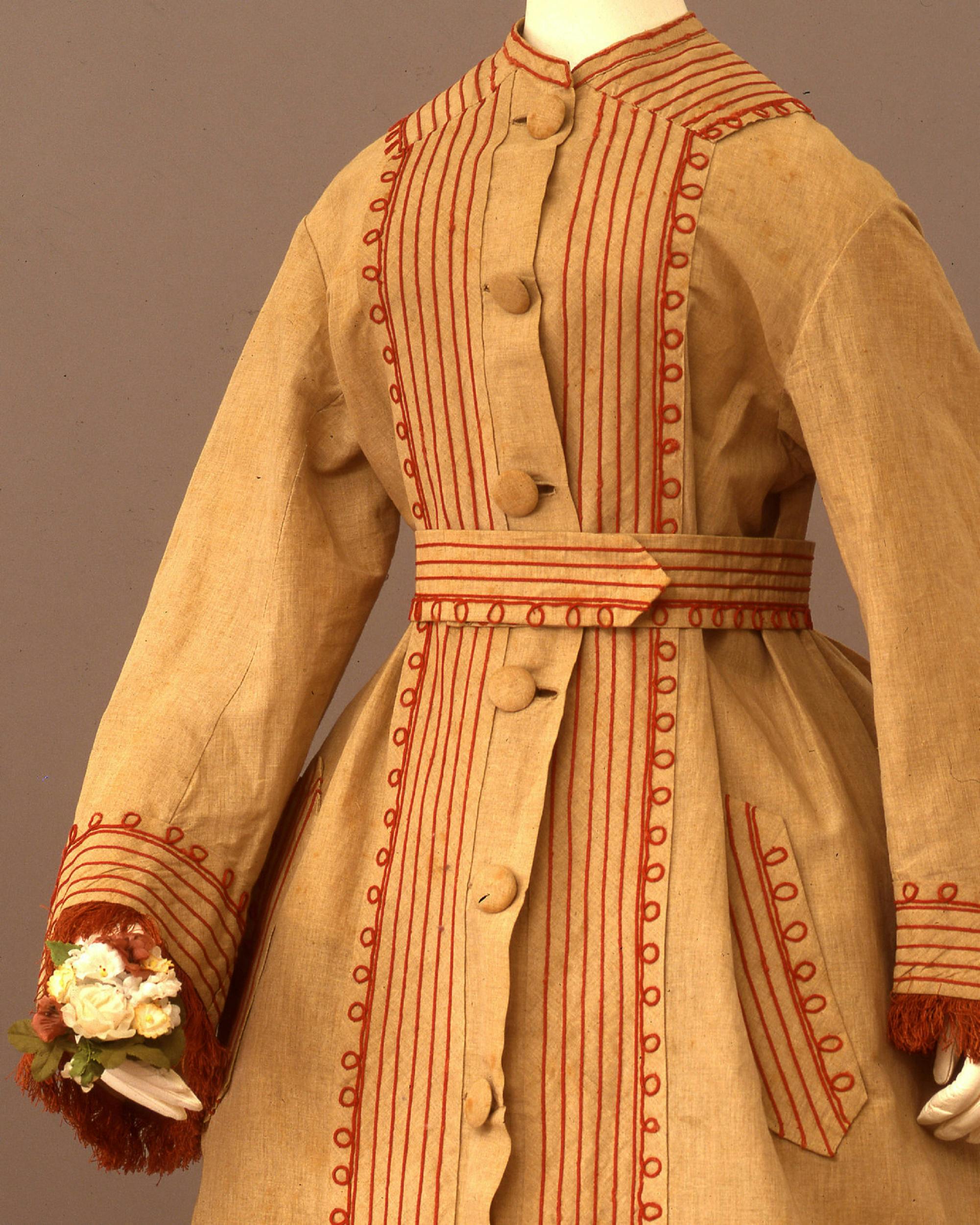Women's garden dress
Italian production
During the 19th century, the daily routine of a lady had a strictly measured pace. The afternoon hours, spent among visits and walks, were the busiest of the day and required the adoption of an appropriate and specific “dress code”.
Afternoon walks required clothes with different styles depending on whether they were on foot, horseback or in a carriage. While a carriage ride admitted the use of more elegant garments, not without “coquettish” details and trains, walking on foot required simpler garments, not so much for what concerned the quality of the fabric, but above all for the style of the dress. The trend was to favour dresses with short skirts, which would keep the feet covered without going over them, as they were considered more practical and appropriate compared to tails and trains, thus avoiding the risk of getting dirty with dust or mud.
In addition to the practical need of facilitating movement while walking, no less important was the need to avoid arousing the attention through overly elaborate or unnatural looks.
Even when women's fashion continued to direct its preferences towards dresses with longer hemlines, simplicity and shorter lengths would continue to be more common in wardrobes intended for practical occasions such as travel, walking and sports activities. This garden robe, which belonged to the noble Florentine family of the Carandini, also seems to hold true to such peculiarities.
Made of raw linen fabric, the dress is fastened at the front by a row of twelve buttons culminating in a banded neckline. The long sleeves, with flared, swallow-tailed hem, are edged with red silk fringes. The belt, which is tightened around the waist, has the same colour and decorations of the dress, the latter consisting of a striped motif and eyelets in red wool drawstring. The width of the skirt was now less pronounced than in previous years, and the volume appeared to redistribute at the back.
There are certain affinities between the structural aspects of the dress and those exhibited by certain female figures portrayed by artists of the Macchiaioli group between 1864 and 1870, such as the dresses worn by the female subjects depicted by Giovanni Fattori in Rotonda Palmieri (1866), or those depicted by Silvestro Lega in canvases such as Il pergolato or La passeggiata in giardino. A similar neckline to the one of the dress on display is also exhibited by the maiden standing closer to the window depicted in another work by Lega, Il Canto dello stornello, dated 1867.
La Galleria del Costume/2 , Centro di, Firenze, 1986, p. 36; S. Ricci, Le ore della moda: il codice borghese delle buone maniere , in La Galleria del Costume/5 , Centro di, Firenze, 1993, pp. 12, 17; A. Fiorentini Capitani, Progresso, moda ed emancipazione femminile tra Ottocento e Novecento , in La Galleria del Costume/5 , Centro di, Firenze, 1993, p. 25.
Singing a ditty
Silvestro Lega (Modigliana [Forlì] 1826 - Florence 1895)
